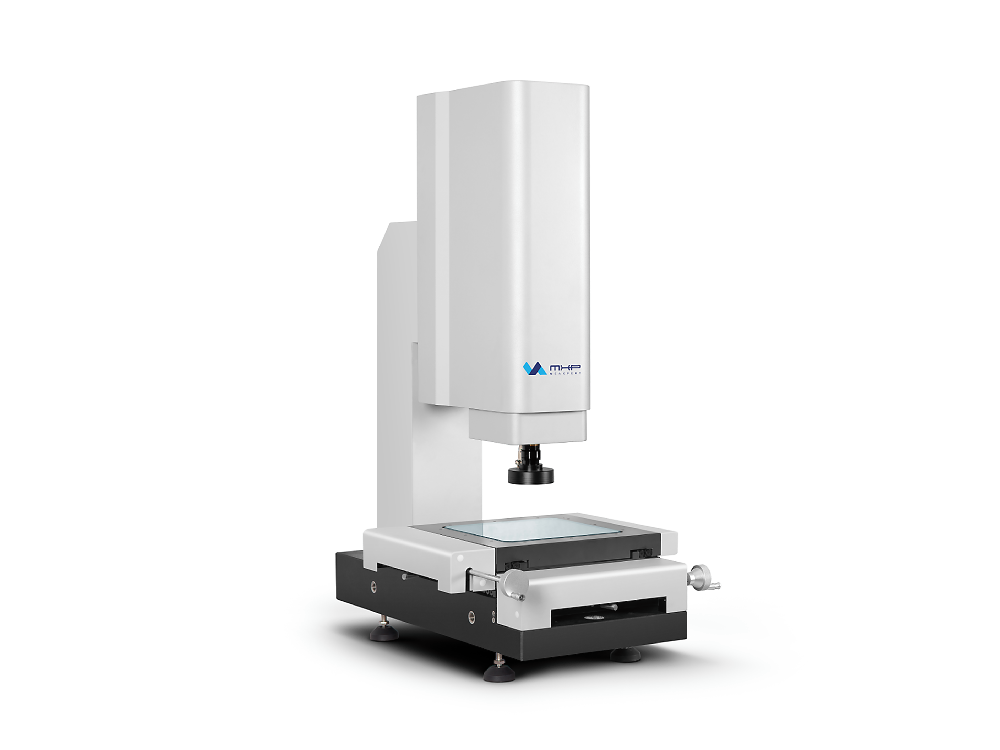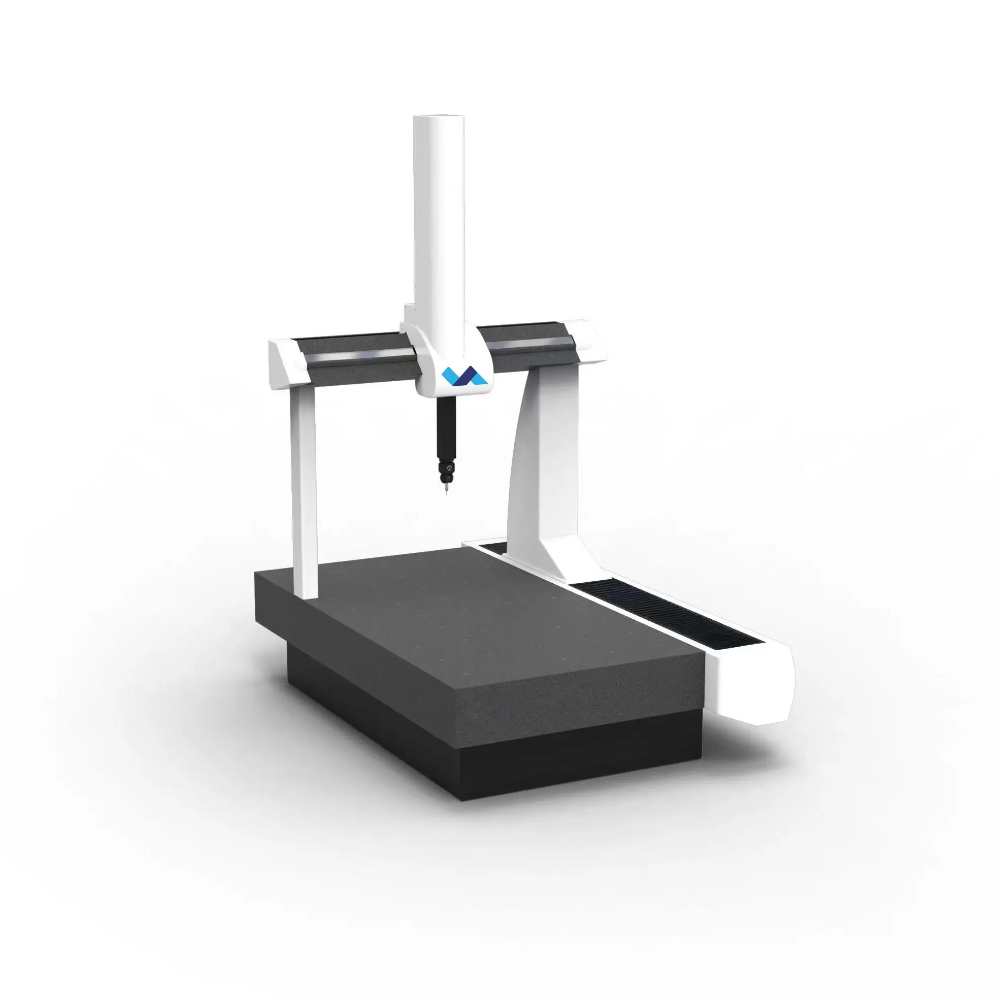
Precision measurement is a necessity for modern manufacturing production. Even the slightest deviation can lead to poor quality or high costs. Traditional tools such as calipers and gauges are reliable, but they cannot meet the demanding speed and accuracy requirements of modern complex assembly lines.
Advanced tools like coordinate measuring machines (CMMs) and vision measuring machines (VMMs) have changed 3D measurement. They meet the high-precision demands of complex shapes, angles, and distances with ease. Both are powerful, but they are applicable to different scenarios and have unique advantages. This article will take a deep look at the differences between CMMs and VMMs, their respective advantages, and how to choose the best solution for your manufacturing needs.
Che cos'è un VMM?

Vision Measuring machines (VMMs) are also called video-measuring systems or image-measuring systems. They are optical measuring instruments, ideal for measuring small or delicate parts. VMM machines use a non-contact measurement method, thus avoiding the risk of damage caused by physical contact.
The visual sensor is the core component of the VMM machine, which includes a camera and an optical lens. There are also laser probes and contact probes. The laser probe is used to measure transparent and translucent objects. The contact probe can measure 3D distance.
VMMs capture an object’s image with a camera and use computer software to generate a 3D model. The operator analyzes and measures linear attributes such as points, lines and angles as well as geometric attributes based on the model.
Che cos'è una CMM?

CMM stands for coordinate measuring machine, which uses a probe and computer software to analyze and measure objects. Unlike VMMs, CMMs are usually larger and have a solid granite platform, making them suitable for measuring heavy or large parts.
Coordinate measuring machines (CMMs) collect precise coordinate data by contacting different points on an object. The software then turns these coordinates into a detailed 3D CAD model. This lets users measure features like distance, angle, roundness, and geometric tolerance (GD&T). Some portable coordinate measuring machines (CMMs) now do not require a fixed workbench, making them more flexible to operate.
The Differences Between VMM and CMM
Sia il VMM che il CMM quantificano le caratteristiche geometriche di un oggetto. Tuttavia, presentano alcune differenze fondamentali. Valutiamo alcuni aspetti chiave che mettono in contrasto la visione e le macchine di misura a coordinate.
Metodi di misurazione
VMMs use non-contact optical systems. They rely on high-resolution cameras and laser probes. These tools capture images and measure small or delicate parts without touching them. CMMs use contact probes to gather coordinate data by touching the object. They also have larger stages than VMMs. This makes CMMs better for heavy or rugged parts.
Precisione e accuratezza
Because VMMs use optical lenses and computer software tools, they are generally faster and easier to operate for simple measurements. VMMs offer features such as automatic edge detection, tracking, autofocus, and light adjustment tools. They can measure distances with an accuracy of up to 0.25 microns.
CMMs, while highly accurate (measuring distances with an accuracy of 2 to 5 microns), require more setup time and skilled staff to operate.
Applicazioni
VMMs are ideal for industries that require non-contact measurement of complex or fragile parts, such as electronics, machinery, and medical devices. CMMs have bigger stage areas. They are popular in aerospace, automotive, and heavy manufacturing. This includes automotive prototypes, CNC fixtures like spindles and slides, and heavy machine parts.
Costi e manutenzione
I VMM sono generalmente convenienti. Sono più facili da mantenere grazie alle loro parti operative più piccole. Richiedono un piccolo investimento iniziale. Tuttavia, il loro prezzo è influenzato da fattori quali la modalità di movimento del VMM, il tipo di sensore, la funzionalità del software e la configurazione hardware.
CMMs require a higher initial investment than VMMs. They are also bulkier and have complex moving parts. For this reason, maintaining them can prove challenging. CMMs require a trained operator to work them. Factors such as professional training, work hours, and shift timings may influence the cost of operating a CMM. Other cost factors may include licensing fees, calibration costs, and replacement of probe tips.
Should I choose VMM or CMM?
Volete sapere qual è quello giusto per voi? Cominciate a porvi queste domande:
- Pensate in termini di spazio. La vostra officina è grande o piccola? Le CMM sono grandi e potrebbero essere inadatte alle piccole officine. Le VMM, invece, sono macchine compatte. Se si lavora in uno spazio ridotto, sono la scelta ideale.
- Quanti pezzi dovete lavorare in un giorno? Molte officine lavorano quotidianamente grandi quantità di pezzi. In questo caso, una VMM potrebbe essere la soluzione ideale. Tuttavia, se lavorate con un numero inferiore di pezzi, le CMM faranno al caso vostro. Le CMM sono anche più adatte ad analizzare oggetti di dimensioni diverse.
- Il tipo di pezzo da misurare determina anche la macchina necessaria. Se si misurano oggetti 3D, un sistema di misura a immagini non può eseguire le operazioni necessarie. Il punto di forza di una VMM è l'alta risoluzione, che le consente di generare immagini 2D precise.
- Volete un'estrema precisione a livello di micron? In questo caso, le VMM potrebbero fare al caso vostro. Sebbene entrambe le macchine siano eccellenti, le VMM offrono una precisione fino a 0,25 micron.
- I pezzi da misurare sono fragili o modellabili? In questo caso, optate per la VMM. Si tratta di macchine senza contatto. Possono misurare oggetti modellabili, mentre le CMM non possono farlo.
Conclusione
Che si scelgano le VMM o le CMM, entrambi sono strumenti metrologici ad alte prestazioni. Garantiscono un'accelerazione del processo di produzione. La scelta della macchina giusta ottimizzerà le vostre linee di misura e di progettazione. Pur avendo funzioni simili, entrambe le macchine hanno applicazioni molto diverse. Per una velocità di lavoro più elevata, una maggiore precisione e oggetti di piccole dimensioni, scegliete la VMM. Per la versatilità, la mappatura 3D e i pezzi pesanti, scegliete la CMM. Se ricordate i punti chiave che abbiamo condiviso in questo articolo, l'acquisto di una macchina di misura sarà semplice e senza problemi.
Informazioni su MXP
MXP is a leader in VMMs and CMMs. We provide efficient, reliable, quality inspection solutions using advanced optical tech and precise measurement systems. Contattateci ora.
